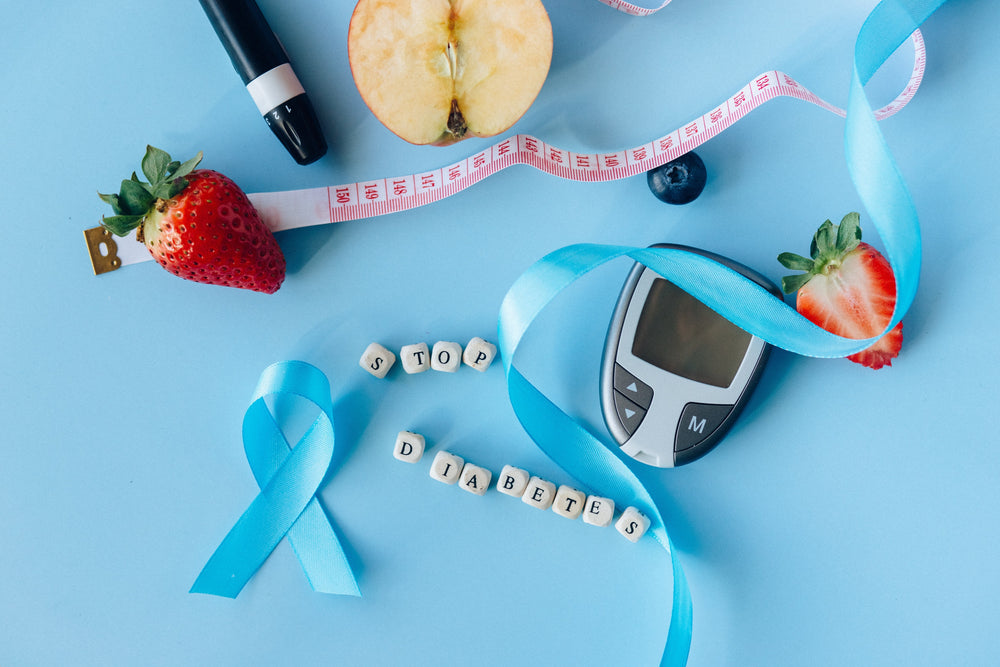
Adrián Díaz
Enfermero pediátrico y divulgador sobre la diabetes @Donsacarino
SUGAR AND THE DIABETES PANDEMIC
With a global population involved that could conquer the entire European Union (England included), diabetes is the most relevant endocrine pathology in the world. And a true “pandemic” that continues to grow and worry given the enormous health and economic costs it entails.
A highly complex pathology and where no one is spared. Regardless of your last name (type 1, type 2, MODY, LADA, etc.), there are a series of pillars that you must comply with to bring the pathology to a successful conclusion. I have defined 6 fundamental keys: treatment (ADOs and/or insulin), exercise, diet, education, ability to interpret control and management at a psychological level.
Each point is a world. But perhaps the most complex and certainly the broadest is nutrition. Therefore, it is not unusual for a well-educated person with diabetes to end up having a master's degree in nutrition based on the street and trial/error.
Within this huge world of nutrition, there is a topic that greatly worries people with diabetes: “HOW TO SUBSTITUTE SUGAR” . And going a little further: “HOW TO REPLACE SUGAR WITH SOMETHING HEALTHY.”
Sugar is not good for those of us in the sweet guild. Recommendation easily extendable to the general population (and if you don't believe me, read the fascinating book “The Glucose Revolution”) . But on many occasions this population ends up consuming (under profound ignorance) options even worse than sugar itself. Examples such as artificial sweeteners (aspartame, saccharin, acelsulfame K, etc.), maltitol or options that are still sugar even though they are sold as the best (coconut sugar, agave syrup, etc.).
Among the options we have to give ourselves a very sweet taste, we fundamentally have 3 very top alternatives : monk fruit , stevia and polyalcohols .
But the truth is that when we jump from theory to practice, we tend to “cross out two”: monk fruit because it is quite difficult to get in the EU (as well as expensive), and stevia (or rather steviol glycosides ), because it does not convince everyone given its bitter aftertaste. Therefore, and in the end, we are left with polyalcohols.
The world of polyalcohols is extremely extensive. So so that it doesn't blow your mind, I'm going to make you the super mega summarized version:
We can fundamentally talk about 3 commercial references in the world of polyalcohols: maltitol, xylitol and erythritol.
Among the 3, surely if you have been attentive to reading you will find one that bothers you. Maltitol is a cheap polyalcohol, quite processed and very easy to use by the industry. These three points seem to matter more than what I am going to tell you below, since it is a short-paste sweetener in most commercial 0% sugar options.
A sweetener with many bad things:
1. It has a significant caloric value (2.1 kcal x gr).
2. It has carbohydrates (50 g of HC x 100 g), and a medium glycemic index (GI).
3. Highly fermentable (by 60%). This will bring with it significant gastrointestinal symptoms, especially in predisposed people (abdominal pain, gas, diarrhea, etc.). As I call it, “a gutbuster.”
4. It is metabolized to fructose. Fructose follows a different pathway than glucose: it passes through the liver and it tends to form fat with it. That is to say, in the end what you save on one hand you gain on another.
As you can see, maltitol does not interest us in our lives . Therefore, we can put the magnifying glass on the two options we have left:
1. Xylitol : It has approximately the same calories and fermentation percentage as maltitol. A little less HC (35 gr x 100 gr), and a much lower GI. More natural origin and is not metabolized to fructose.
2. Erythritol : Without a doubt my favorite. It is the most caloric polyalcohol. It is barely fermented (10%), so it does not usually cause gastrointestinal symptoms. Of what is absorbed, the body is not able to metabolize anything, therefore, it is a free HC sweetener that is eliminated in its entirety through urine. Natural origin and without studies that say bad things about it. As you see, it is wonderful.
It only has a couple of small spots on its resume: one is that it has 30% less sweetening power than sugar, so either you get used to lowering your sweetness threshold or you will have to add a little more. And the second is that it is a polyalcohol that is a little more complicated to work with in the field of baking.
Luckily at Impossible Bakers they are real geniuses. In addition, they usually combine erythritol with stevia, another very top sweetener, but one that is difficult to work with given its bitter aftertaste.
That is not an impediment for them. That's why their pastries are so delicious and so healthy. Because they are capable of combining health and taste to make authentic virguerías.
Don Sacarino.
Postscript: For those of you who have diabetes, break with the idea that everyone says that when counting the rations of polyalcohols you only have to add half. In reality, things are more complex, since each polyalcohol is different. I leave you the exact data of the three that I have mentioned on this occasion:
1. Xylitol: You have to count 35 grams of HC for every 100 grams you consume.
2. Maltitol: You have to count 55 grams of HC for every 100 grams you consume.
3. Erythritol: You don't have to account for anything. It is totally free.

OTROS ARTICULOS RELACIONADOS
Vivir sin gluten (y con sabor): un homenaje a todas las personas celíacas
Diabetes Tipo 1: Una visión integrativa de la alimentación infantil
Alzheimer's: diabetes of the brain
Your Intestinal Microbiota: Stress, Nutrition and Digestive Balance
Control your glucose, protect your heart
How to take care of our immune system?
The sweet poison
Read more

Processed and ultra-processed in baby food
We know that ultra-processed foods are bad for our health, but... What exactly are ultra-processed foods? What is the difference between processed and ultra-processed? How do we make sure we con...
Read more
Cardiac rhtyms. Set your clock
Circadian rhythms are the changes that occur at the behavioral, physical and mental level in time periods of approximately 24 hours and are mainly related to light and dark cycles. They affect huma...
Read more



